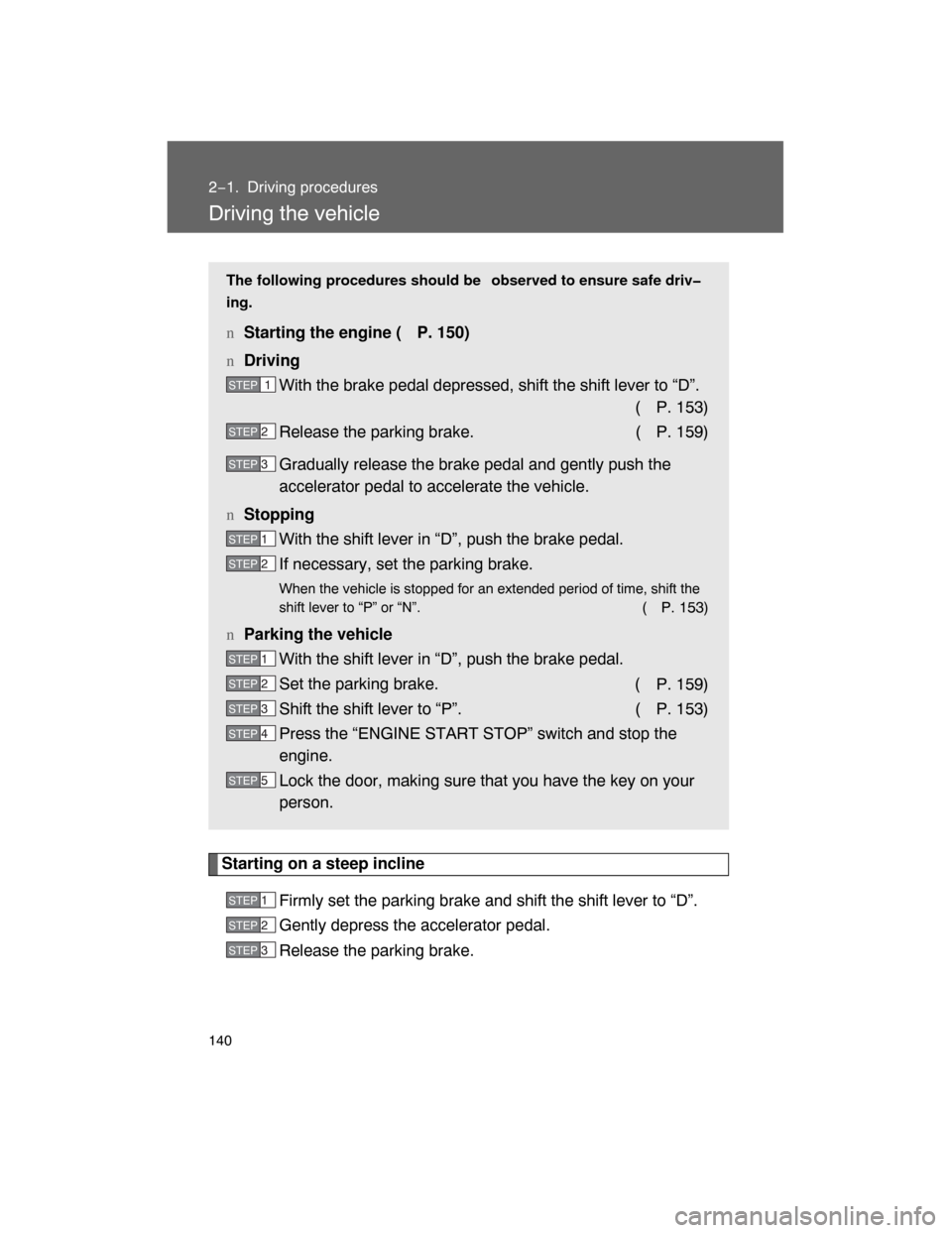Page 94 of 531
95
1−6. Theft deterrent system
1
Before driving
nCertifications for the engine immobilizer system
FCC ID: NI4TMIMB−1
NOTE:
This device complies with Part 15 of the FCC Rules. Operation is subject to
the following two conditions: (1) this device may not cause harmful interfer−
ence, and (2) this device must accept any interference received, including
interference that may cause undesired operation.
FCC WARNING:
Changes or modifications not expressly approved by the party responsible
for compliance could void the user ’s authority to operate the equipment.
Page 95 of 531
96 1−6. Theft deterrent system
CAUTION
nCertifications for the engine immobilizer system
Changes or modifications not expressly approved by the party responsible
for compliance could void the user ’s authority to operate the equipment.
NOTICE
nFor proper system operation
Do not modify, remove or disable the engine immobilizer system. If any
unauthorized changes or modifications are made, the proper operation of
the system cannot be guaranteed.
Page 97 of 531

98 1−6. Theft deterrent system
nItems to check before locking the vehicle
To prevent unexpected triggering of the alarm and vehicle theft, make sure
of the following.
lNobody is in the vehicle.
lThe windows and moon roof are closed before the alarm is set.
lNo valuables or other personal items are left in the vehicle.
nTriggering of the alarm
The alarm may be triggered in the following situations.
(Stopping the alarm deactivates the alarm system.)
lA person inside the vehicle opens a door or hood.
lThe battery is recharged or replaced when the vehicle is locked.
n
Panic mode
nDeactivating or stopping the alarm
Do one of the following to deactivate or stop the alarm.
lUnlock the doors using the smar t key system or the wireless
remote control.
lStart the engine. (The alarm will be deactivated or stopped after
a few seconds.)
When is pressed for longer than
about one second, the headlights/tail
lights/emergency flashers will flash, the
front and rear interior lights will come on,
and an alarm will sound for about 60 sec−
onds to deter any person from trying to
break into or damage your vehicle.
To stop the alarm, press any button on
the wireless remote control.
Page 115 of 531
116 1−7. Safety information
Deactivating the curtain shield airbags in a vehicle rollover
On/off (Pressing longer)
The “RSCA OFF” (roll sensing of
curtain shield airbags off)
indicator light turns on.
(Only when the “ENGINE START
STOP” switch OFF.)
nThis switch only should be used
In a situation where the inflation is not desired (such as during extreme off
road driving).
nOperating conditions when the “RSCA OFF” indicator turns on
lThe curtain shield airbag and seat belt pretensioner will not activate in a
vehicle rollover.
l
The curtain shield airbag will activate in a severe side impact.
CAUTION
nWhile normal driving
Make sure the “RSCA OFF” indicator light is not turned on. If it is left on, the
curtain shield airbag will not activate in the event of an accident, which may
cause death or serious injury.
Page 138 of 531

140
2−1. Driving procedures
Driving the vehicle
Starting on a steep incline
Firmly set the parking brake and shift the shift lever to “D”.
Gently depress the accelerator pedal.
Release the parking brake.
The following procedures should be observed to ensure safe driv�
ing.
nStarting the engine ( P. 150)
nDriving
With the brake pedal depressed, shift the shift lever to “D”.
( P. 153)
Release the parking brake. ( P. 159)
Gradually release the brake pedal and gently push the
accelerator pedal to accelerate the vehicle.
nStopping
With the shift lever in “D”, push the brake pedal.
If necessary, set the parking brake.
When the vehicle is stopped for an extended period of time, shift the
shift lever to “P” or “N”.
( P. 153)
nParking the vehicle
With the shift lever in “D”, push the brake pedal.
Set the parking brake. (
P. 159)
Shift the shift lever to “P”. ( P. 153)
Press the “ENGINE START STOP” switch and stop the
engine.
Lock the door, making sure that you have the key on your
person.
STEP1
STEP 2
STEP 3
STEP 1
STEP 2
STEP 1
STEP 2
STEP 3
STEP 4
STEP 5
STEP 1
STEP 2
STEP 3
Page 140 of 531

142 2−1. Driving procedures
CAUTION
nWhen starting the vehicle
Always keep your foot on the brake pedal while stopped with the engine run−
ning. This prevents the vehicle from creeping.
nWhen driving the vehicle
lDo not drive if you are unfamiliar with the location of the brake and accel−
erator pedals to avoid depressing the wrong pedal.
�Accidentally depressing the accelerator pedal instead of the brake
pedal will result in sudden acceleration that may lead to an accident
that could result in death or serious injury.
�When backing up, you may twist your body around, leading to a diffi−
culty in operating the pedals. Make sure to operate the pedals properly.
�Make sure to keep a correct driving posture even when moving the
vehicle only slightly, allowing you to depress the brake and accelerator
pedals properly.
�Depress the brake pedal using your right foot. Depressing the brake
pedal using your left foot may delay response in an emergency, result−
ing in an accident.
lDo not drive the vehicle over or stop the vehicle near flammable materials.
The exhaust system and exhaust gases can be extremely hot. This may
cause a fire if there is any flammable material nearby.
lDo not let the vehicle roll backwards while the shift lever is in a driving
position, or roll forward while the shift lever is in “R”.
Doing so may cause the engine to stall and lead to poor steering perfor−
mance, resulting in an accident or damage to the vehicle.
l
If the smell of exhaust is noticed inside the vehicle, open the windows and
check that the back door is closed.
Large amounts of exhaust in the vehicle can cause driver drowsiness and
an accident, resulting in death or a serious health hazard. Have the cause
of the problem inspected immediately.
Page 141 of 531

143
2−1. Driving procedures
2
When driving
CAUTION
lDo not under any circumstances shift the shift lever to “P” or “R” while the
vehicle is moving.
Doing so can cause significant damage to the transmission and may result
in a loss of vehicle control.
lDo not shift the shift lever to “N” while the vehicle is moving.
Doing so may cause the engine brake not to operate properly and lead to
an accident.
lDo not turn the engine off while driving.
The power steering and brake actuator
will not operate properly if the
engine is not running.
lUse engine braking (downshift) to maintain a safe speed when driving
down a steep hill.
Using the brakes continuously may cause the brakes to overheat and lose
effectiveness. ( P. 154)
lWhen stopped on an inclined surface, use the brake pedal and parking
brake to prevent the vehicle from rolling backward or forward and causing
an accident.
lDo not adjust the position of the steering wheel, the seat, or the inside or
outside rear view mirrors while driving.
Doing so may result in a loss of vehicle control that can cause accidents
that may result in death or serious injury.
lAlways check that all passengers’ arms, heads or other parts of their bod−
ies are not outside the vehicle, as this may result in death or serious injury.
l
Do not drive in excess of the speed limit. Even if the legal speed limit per−
mits it, do not drive over 85 mph (140 km/h) unless your vehicle has high−
speed capability tires. Driving over 85 mph (140 km/h) may result in tire
failure, loss of control and possible injury. Be sure to consult a tire dealer
to determine whether the tires on your vehicle are high−speed capability
tires or not before driving at such speeds.
Page 142 of 531

144 2−1. Driving procedures
CAUTION
nWhen driving on slippery road surfaces
lSudden braking, acceleration and steering may cause tire slippage and
reduce your ability to control the vehicle, resulting in an accident.
lSudden changes in engine speed, such as engine braking caused by up−
shifting or down−shifting, may cause the vehicle to skid, resulting in an
accident.
lAfter driving through a puddle, lightly depress the brake pedal to make
sure that the brakes are functioning properly. Wet brake pads may prevent
the brakes from functioning properly. If the brakes on only one side are wet
and not functioning properly, steering control may be affected, resulting in
an accident.
nWhen shifting the shift lever
Be careful not to shift the shift lever with the accelerator pedal depressed.
This may lead to unexpected rapid acceleration of the vehicle that may
cause an accident and result in death or serious injury.
nWhen the vehicle is stopped
lDo not race the engine.
If the vehicle is in any gear other than “P” or “N”, the vehicle may acceler−
ate suddenly and unexpectedly, and may cause an accident.
lDo not leave the vehicle with the engine running for a long time.
If such a situation cannot be avoided, park the vehicle in an open space
and check that exhaust fumes do not enter the vehicle interior.
l
Always keep a foot on the brake pedal while the engine is running to pre−
vent an accident caused by the vehicle moving.